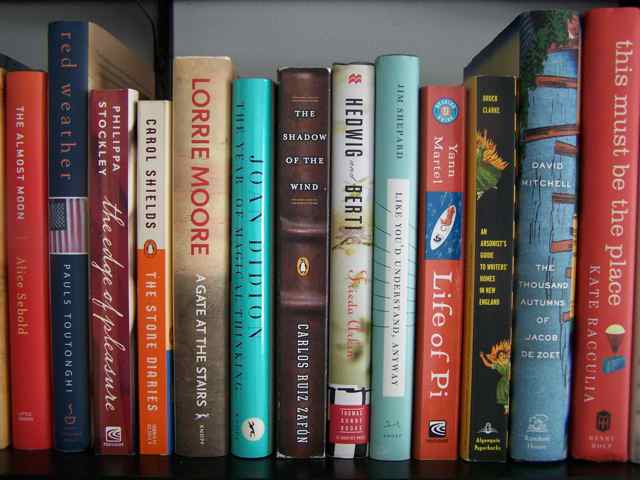 Life After Life is Jill McCorkle‘s sixth novel, and her first in 17 years. It’s a story of interwoven lives centered around the Pine Haven retirement home in a fictional small North Carolina town that bears a slight resemblance to Lumberton, NC, where she grew up, or at least to her memories of Lumberton. Jill McCorkle is a Southern writer who doesn’t lay on the Southern charm too thick, maybe influenced by time spent teaching and writing at New England schools like Harvard, Tufts, and Bennington College.
Life After Life is Jill McCorkle‘s sixth novel, and her first in 17 years. It’s a story of interwoven lives centered around the Pine Haven retirement home in a fictional small North Carolina town that bears a slight resemblance to Lumberton, NC, where she grew up, or at least to her memories of Lumberton. Jill McCorkle is a Southern writer who doesn’t lay on the Southern charm too thick, maybe influenced by time spent teaching and writing at New England schools like Harvard, Tufts, and Bennington College.
The main character of Life After Life is Joanna, a middle-aged woman who has returned to her hometown after years of rootlessness and a few failed marriages. She performs volunteer hospice services at Pine Haven, and is a regular visitor to those who aren’t dying, as well. While waiting for death with residents who are approaching the end of their lives, Joanna takes notes during their final hours – creating short biographies of the dead, detailing what they remember and think of when nearing death. Other characters include 85-year-old Sadie Randolph – beloved by all at Pine Haven –who creates photo collages picturing residents’ dreams and desires, and Rachel Silverman –a new resident –who fled her Massachusetts life to retire in the South, chasing a secret memory from her younger days. Then there’s C.J. – the tattooed young manicurist and troubled single mother who rooms with Joanna and is just starting to make a life for herself and little Kurt – and twelve-year-old Abby, whose parents fight every night when they think she’s asleep and who prefers visiting Pine Haven to dealing with other girls her own age. There are nasty characters, too, and bad things happen. Life After Life definitely has a dark streak running through it.
Here’s an excerpt from a piece written by the author about how she came to write Life After Life. The complete piece is on the Southern Indie Booksellers’ Web site, Authors Around the South.
I have always loved composite pieces, each character introduced like an instrument, voices blending until there is a communal symphony of a particular place. I greatly admire the novel The Heart Is a Lonely Hunter for this reason, and for the way McCullers managed to highlight every walk of society and longing. In the same way, I have long been inspired by Thornton Wilder’s Our Town, especially its use of time and the way it gave voice to the dead. That’s all that there is.
I am very interested in that fine line between fiction and reality and between comedy and tragedy—and pushing the line as much as possible. In this novel, I was also interested in pushing the line between life and death in hopes of finding that split moment when the reader is aware of both places—what those left on earth are recalling and what the one leaving is thinking, that brief spark of connection and recognition before the paths continue in different directions.
This novel is a love song to memory and life. [to read the entire piece, click here.]
If you like the sweetly sardonic comedy and poignancy in movies about old people who aren’t ready for rocking chairs like Quartet and The Best Exotic Marigold Hotel, or the quirky characters in novels like Walking across Egypt by Clyde Edgerton or Hilma Wolitzer’s An Available Man, you’ll probably like the bittersweet humor of Life After Life. Although more literary in tone than the Miss Julia books by Ann B. Ross or Fannie Flagg’s novels, Life After Life shares their spirited theme of living a meaningful life as long as possible.
Life After Life
McCorkle, Jill
Algonquin Books (Shannon Ravenel)
Mar. 26, 2013978-1565122550
342 pp.
$24.95, U.S.
Disclosure: I received an advance e-galley of this book from the publisher through NetGalley.
